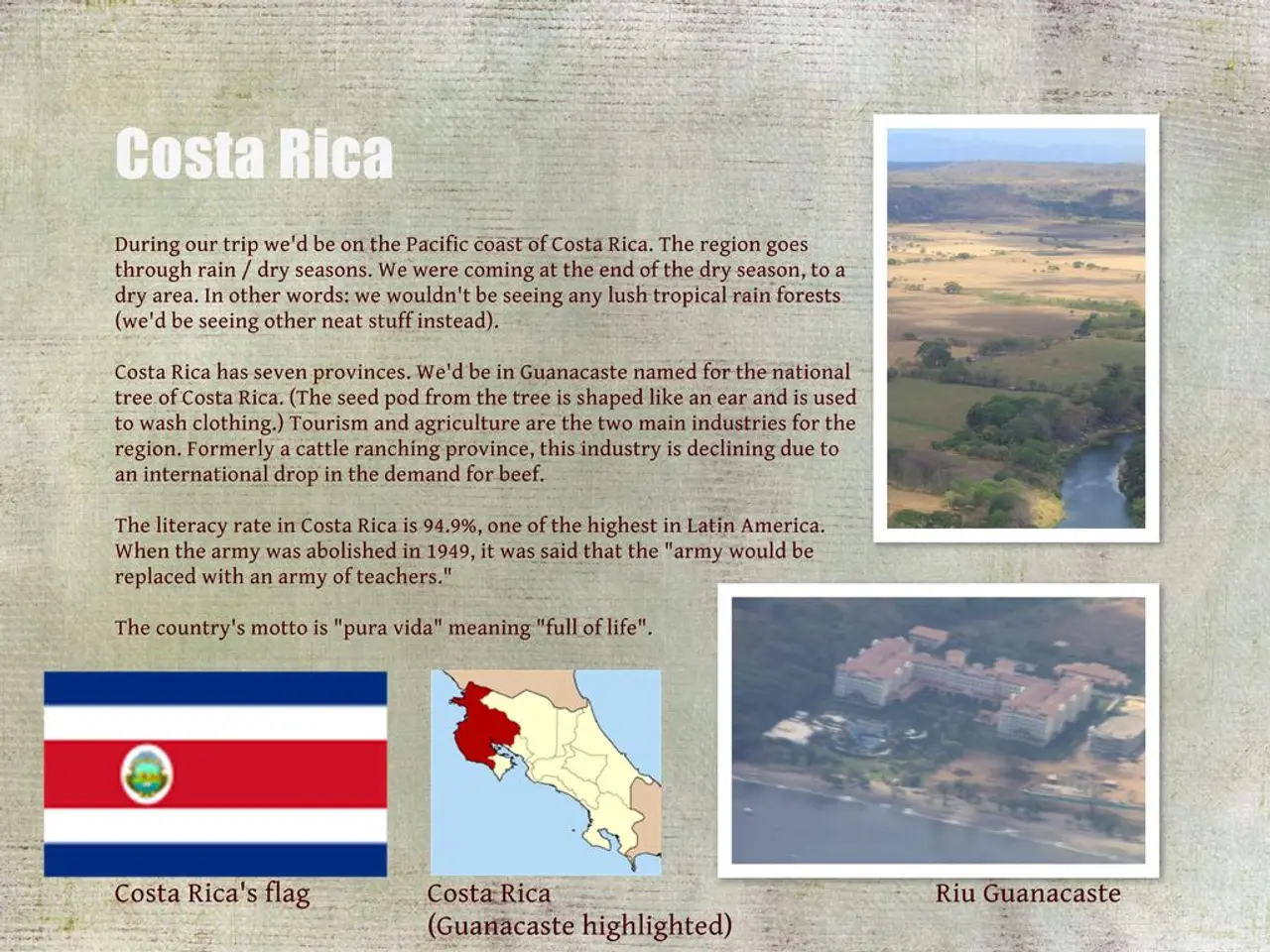Day Dedicated to Indigenous Populations (August 9th): Indigenous rights threatened by resource exploitation
Indigenous Rights Under Threat in Brazil and Peru
Indigenous communities in South America, particularly in Brazil and Peru, are facing significant challenges to their rights, cultures, and territories. Environmentalists and human rights activists are urging action to protect these vulnerable groups, as legislative proposals in both countries threaten their way of life.
In Peru, indigenous communities in the Amazon region are facing violence, bribery, and illegal incursions from drug cartels building airstrips and encroaching on their ancestral lands. These activities, often with limited government intervention, are pushing over 270 communities off their lands [1][2]. Additionally, indigenous groups living in voluntary isolation are exposed to illegal logging, drug trafficking, and conservation projects like REDD+ that restrict their traditional activities without their free, prior, and informed consent [2].
The situation in Brazil is particularly dire due to recent environmental deregulation known as the "Devastation Bill." This legislation allows mining, infrastructure, and agribusiness projects to bypass environmental impact assessments through self-declared online licensing. This excludes untitled Indigenous lands from environmental reviews, putting millions of hectares of forest and Indigenous territories at risk [1][3][4]. Although Brazil’s President partially vetoed the bill, significant loopholes remain, continuing to threaten Indigenous lands and biodiversity [5].
The Society for Threatened Peoples (GfbV), an international human rights NGO, is known for advocating for the rights of Indigenous and minority populations globally. They typically engage in raising awareness, lobbying governments, and supporting Indigenous communities in their struggles against dispossession and violence. They often campaign against environmental deregulation, illegal land grabs, and violations of Indigenous autonomy. However, the specific current interventions of the GfbV in these countries are not detailed in the search results.
The right to free, prior, and informed consent is enshrined in the UN Declaration on the Rights of Indigenous Peoples (UNDRIP), which countries like Peru, Brazil, and Germany have ratified. The responsibility for protecting indigenous peoples does not only lie with the countries where they live, but also with the countries that import products and resources from these regions. Supply chain laws are being identified as an important mechanism for respecting and upholding indigenous rights.
In Brazil, the bill PL 2.159/2021 aims to simplify and accelerate environmental compatibility tests for infrastructure and mining projects, potentially bypassing approval requirements for agriculture and road construction. This bill has been met with strong opposition from environmentalists and human rights activists due to the potential risks it poses to Indigenous lands and biodiversity.
For more information about indigenous rights concerns in South America, Dr. Eliane Fernandes can be reached at [email protected] or 0551/49906-23.
Threats to Indigenous Rights
| Threats to Indigenous Rights | Details | |----------------------------------------------|--------------------------------------------------------------------------------------------------------------| | Drug cartels and illegal miners in Peru | Illegal airstrips, bribery, violence, displacement of over 270 communities; government largely inactive[1][2] | | Conservation projects limiting freedoms in Peru | REDD+ and national park restrictions limit hunting, fishing, and use of lands without Indigenous consent[2] | | Environmental deregulation in Brazil | “Devastation Bill” removes robust environmental licensing, excludes untitled Indigenous lands, increases deforestation and mining risks[1][3][4][5] | | Limited legal protection | Over 30% of Indigenous lands in Brazil remain untitled and vulnerable to exploitation[3][4] |
[1] https://www.survivalinternational.org/news/10531 [2] https://www.survivalinternational.org/news/10627 [3] https://www.mongabay.com/2021/07/brazils-devastation-bill-a-threat-to-indigenous-rights-and-the-amazon-rainforest/ [4] https://www.reuters.com/business/energy/brazils-devastation-bill-would-remove-regulations-protect-amazon-2021-06-09/ [5] https://www.reuters.com/world/americas/brazils-bolsonaro-signs-devastation-bill-but-with-controversial-vetoes-2021-07-21/
- The ongoing environmental deregulation in Brazil, such as the "Devastation Bill," threatens the rights of Indigenous communities by allowing mining, infrastructure, and agribusiness projects to bypass environmental impact assessments, putting millions of hectares of forest and Indigenous territories at risk.
- In Peru, the activities of drug cartels, like building illegal airstrips and encroaching on indigenous lands, are pushing over 270 communities off their lands through violence, bribery, and illegal incursions, with limited government intervention.
- The policy and legislation surrounding environmental science in both Brazil and Peru pose significant threats to indigenous rights, cultures, and territories, as legislative proposals in both countries may restrict indigenous activities like hunting, fishing, and logging without their free, prior, and informed consent, as seen in conservation projects like REDD+.






